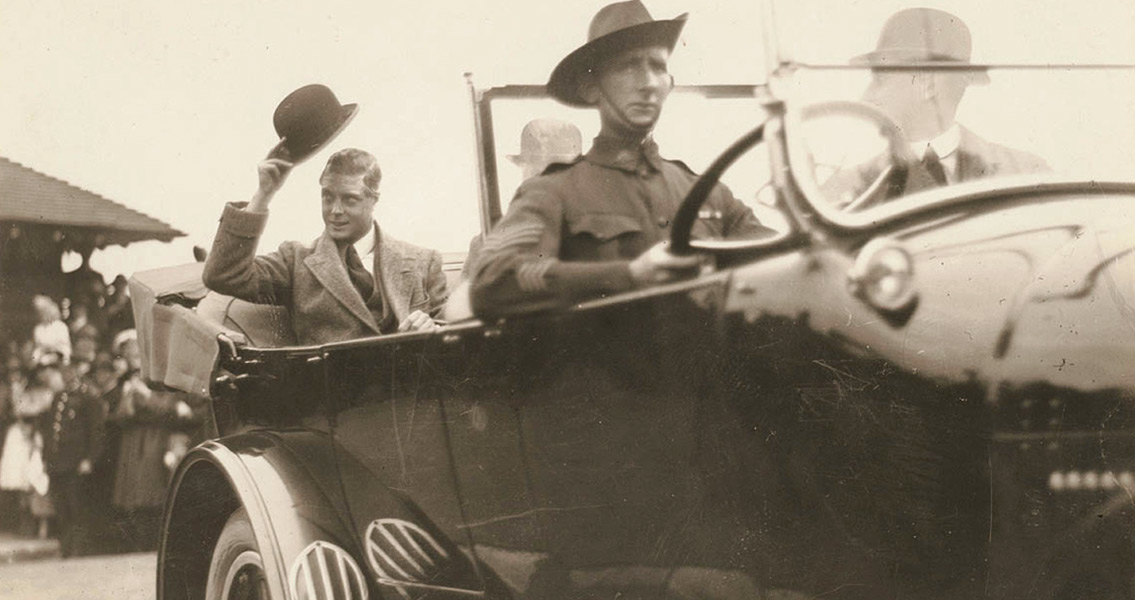<![CDATA[The Sun newspaper has released video footage from the 1930s showing Queen Elizabeth II performing a Nazi salute. Saturday morning’s physical edition of the newspaper features a black and white photo of a young Elizabeth, along with her sister, mother and uncle; the future Edward VIII, on the cover. Elizabeth and her mother are both seen performing the deeply controversial gesture. On The Sun‘s website the full home movie filmed at the royal residence in Balmoral, from which the cover photo was taken, has been published. It shows Edward VIII encouraging the seven year old Elizabeth, and her sister Margaret, to perform the ‘Hitler’ salute as they frolic outside. The images are believed to originate from 1933 or 1934. The story and video have of course stirred up a lot of attention, and led to stern criticism being directed at The Sun from Buckingham Palace for having published it. Although there is no evidence that Queen Elizabeth is, or ever was, a Nazi symphathiser, the release of the home movie provides an interesting insight into perceptions of Hitler in the years leading up to the war. It is far from revelatory, for example, that Queen Elizabeth’s uncle Edward VIII agreed with some Nazi policies and disapproved of Britain’s war against them. Famed for abdicating the thrown in 1936, Edward VIII visited Nazi Germany and personally met Hitler in October 1937. Among their topics of discussion was Hitler’s plan for an international movement for peace, one which would have had Edward VIII as its figurehead. Edward VIII’s sympathies were not unusual for someone of his class and status at the time. Much of Europe, and particularly Germany, had descended into chaos in the aftermath of the First World War. The first years of the Nazi regime however, saw relative stability return to Germany. For aristocrats and royalty living in England the Nazis, at least from the outside, represented stability and a buffer from Communism – the political ideal which by definition stood against wealth and privilege. A July 1933 diary entry from the diplomat Robert Vansittart describes a party he and Edward VIII had both attended, in which the subject of Hitler’s rise to power came up. “The Prince of Wales (Edward VIII’s title at the time) was quite pro-Hitler and said it was no business of ours to interfere in Germany’s internal affairs either re- the Jews or anyone else, and added that dictators are very popular these days and we might want one in England.” Some historians have gone even further in their depictions of Edward VIII’s sympathies for the Nazis. In a book published earlier this year, the German historian Karina Urbach claims that Edward VIII was a severe anti-Semite who blamed the Jews for the outbreak of the war and hoped that Germany would ultimately beat Britain into submission. Her suggestions come as part of a broader study she undertook into the role European aristocrats played in keeping Hitler in power. The extent of Edward VIII’s sympathy for fascist ideology, or his relationship with Hitler, are impossible to truly know. What is clear however, is that his support for fascism was far from exceptional in 1930s Britain. The British Union of Fascists, led by Oswald Mosley, was a serious political force in Britain in the decade, until it was disbanded in May 1940. Up until 1934 it had enjoyed support from national newspapers, including the Daily Mail. At the time, and since, accusations have frequently been made that the BUF received support from Hitler’s Nazi party, although this has never been proved. Of course, as a seven year old, Queen Elizabeth would have had no idea about the meaning of the gesture she is seen performing in the video. Nevertheless, the release of the video raises important questions, not just about the extent of fascist sympathies in the royal family in the 1930s, but in British society as a whole. ]]>
Edward VIII and Nazi Germany
